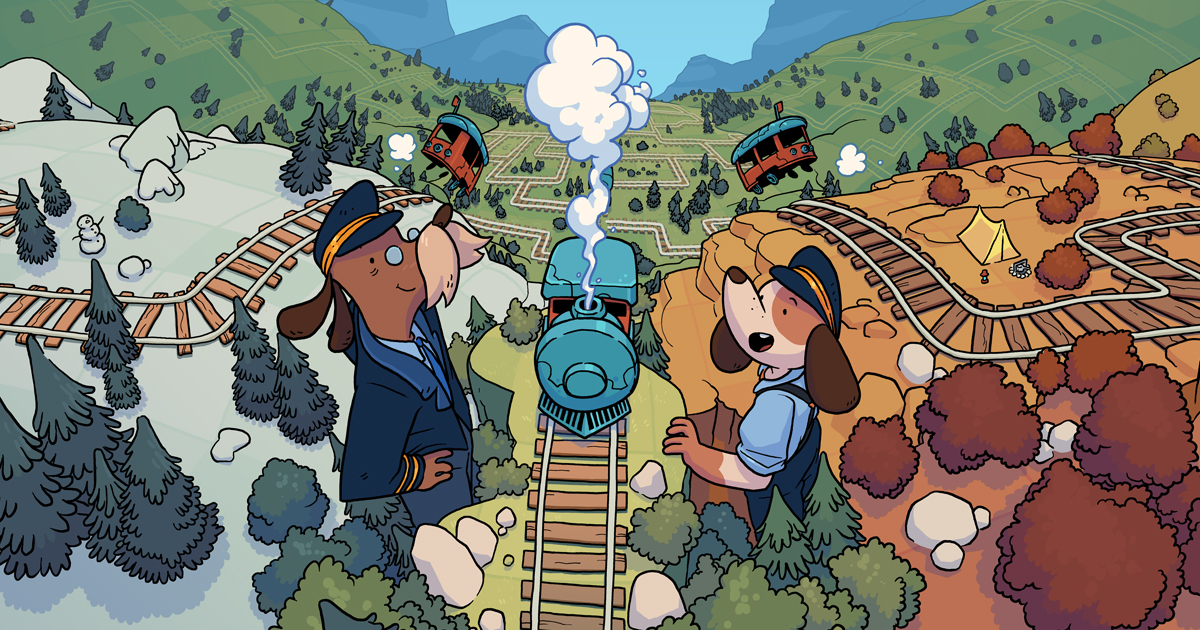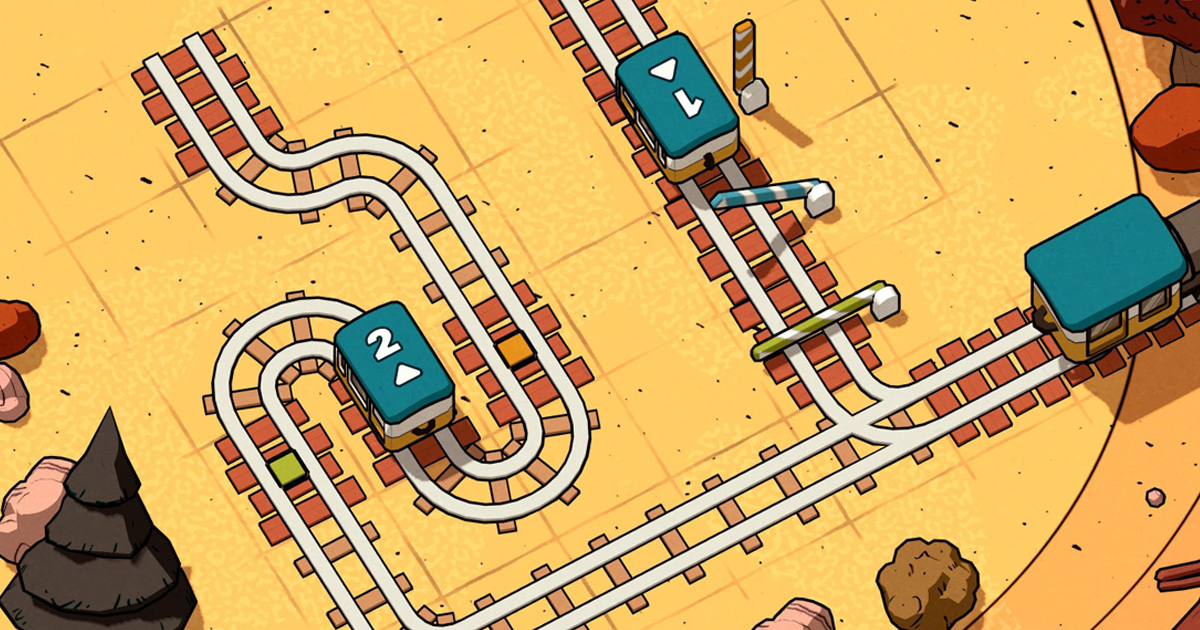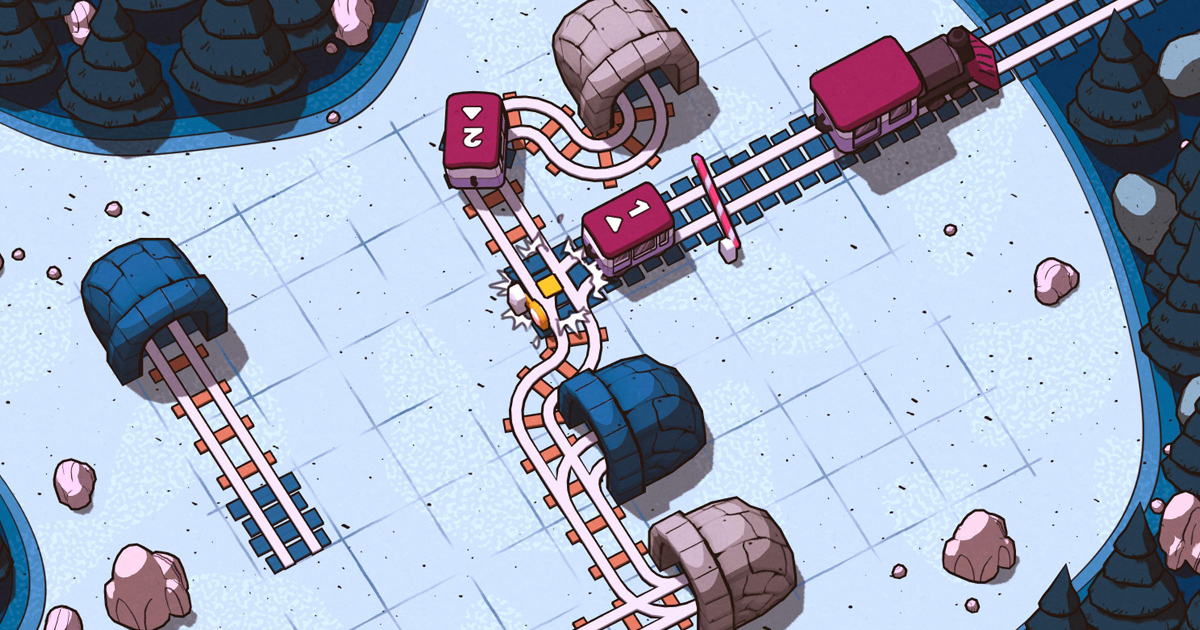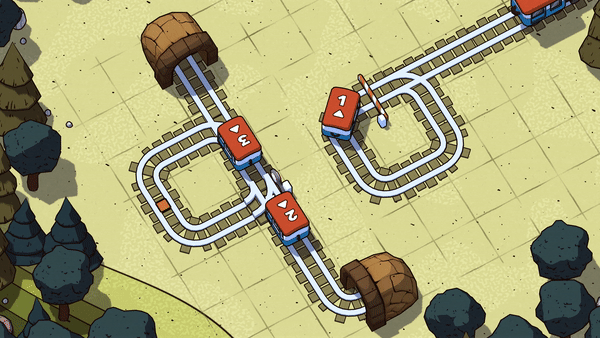Railbound is an upcoming track-bending puzzle game created by Poland-based indie team Afterburn. We spoke with the studio’s founder Luke Spierewka about the game’s development and creating its distinctive, comic-inspired visuals.
A tiny studio with its own philosophy
Spierewka got into gamedev in 2013. He started with game jams and was part of a team that created the original prototype of SUPERHOT, a minimalist-looking FPS with time-based cinematic gameplay.
“From there I finished my bachelor’s degree in game programming, moved on to work at CD Projekt RED, before hitting off and starting my own tiny studio,” he recalls.
Founded in 2016, Afterburn is an aspiring team based in Lodz, Poland. As Spierewka told us, the name wasn’t chosen by accident, since he still hasn’t found a “surefire way” of coping with burnout, a feeling that many game developers are familiar with.
Over the last few years, the studio has released several small titles and is now preparing to launch Railbound on PC, mobile, and consoles.
“Our core philosophy is making comfy puzzle experiences with a gentle difficulty progression — but that doesn’t mean that we don’t have some spicy levels for demanding players appearing later in the game,” Spierewka says.
Making Railbound and crafting its visual style
At its core, Railbound is a puzzle game where a player has to connect and fix railways to help everyone reach their homes. The twist is that you have a limited number of tiles that you need to place in strategic locations, so that all rail cars end up arriving safely.
“We’ve got some experience with designing puzzles, but our previous games have been fairly static affairs — you use a card or place a piece, and the game reacts to it,” Spierewka notes. “Railbound is more dynamic — the player prepares the game field, and then watches the action unfold, which meant we had to change our approach a bit.”
Gameplay-wise, Railbound is inspired by puzzle games like Mini Metro and Cosmic Express. What really makes the game stand out is its eye-catching visuals.
To create the game’s art style, Afterburn reached out to Vile Monarch, a fellow Polish studio founded by This War of Mine co-creators Kacper Kwiatkowski and Grzegorz Mazur. They delivered some concepts, which helped Spierewka and the rest of the team design Railbound’s distinctive look.
Afterburn had to put a lot of effort into crafting the art style, also drawing inspiration from French graphic novels. And the main promo art for Railbound was drawn by Poland-based illustrator and comic artist Igor Wolski.
The main challenge was to eventually turn all those concepts into actual in-engine visuals. According to Spierewka, the team spent more than half of the development time on it, and they are now finally happy with the result.
“It might not look like it at first, but the game is fully 3D and is a result of a lot of playing around with shading techniques,” he says. “Post-process-based outlines are all the rage in the development world right now, but we actually found best results when using tried-and-true geometry-based outlines.”
What tools does Afterburn use?
“We’re fairly small, so our processes are probably less than ideal. We have weekly stand-ups to figure out what needs to be done with the game, playtesting sessions once a week, and the like.” Spierewka says about organizing the work.
“Our company wiki is kept in Notion, although we need to prune it a bit since it’s just been growing since the start of the project. We use Trello for tasks and store data in a combination of Git, NAS and cloud services.”
Like many other indie developers, Afterburn uses Unity as an engine for its games. For years, the team has been combining it with Visual Studio, since it is what they feel most comfortable with.
Speaking of other tools, the set is quite standard and includes Sourcetree / Github Desktop / Fork as version control clients, Blender for 3D, and Photoshop / Affinity Photo for 2D art.
“I’ve been partial to Photoshop for a long time, but I’m not a fan of their current business model, hence trying out Affinity Photo which lacks some features and UX, but can do the job just fine,” Spierewka adds.
Looking forward to the launch
Afterburn had experience working with a publisher before, as 7Levels helped port their two previous games, Golf Peaks and inbento, on the Nintendo Switch. Other than that, the studio has been following the self-publishing approach so far. However, the team doesn’t exclude getting a deal for a global launch in case they manage to find the right partner.
“For us that’d be someone who takes off the burden of things we don’t want to do from us, while allowing us to focus on development and making the game as good as it can be, without making things harder for us in the long term,” Spierewka explains.
Afterbun started working on Railbound in November 2021 and initially planned to release the game in Spring 2022. However, the studio had to postpone the launch, currently targeting late Summer as a new release window.
“Realizing the art style took more time than we expected and is the main thing that caused us delays, though it’s also very important so we’re not too bummed out about that,” Spierewka says.
Not going into specific numbers, he is optimistic about the upcoming launch, as the community seems to be happy about the game so far. As he concludes, “It’d be great if Railbound allowed us to continue making and releasing games like that.”





